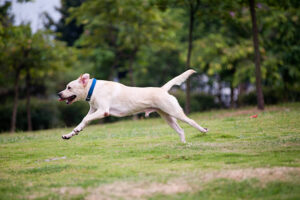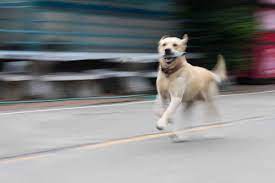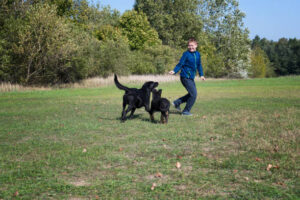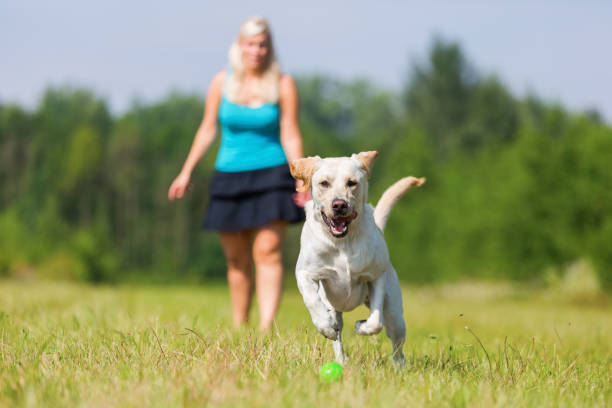In this article, we learn about How Fast Can a Labrador Retriever Run. Labradors are known for their impressive speed and agility. so let’s know about How Fast Can a Labrador Retriever Run.
- At their fastest, labradors can run up to 35 miles per hour. Although this is a great speed, your labrador will not be able to maintain it for very long.
- The fastest we’ve seen is 35 miles per hour, but the Labrador averages 15 miles per hour while traveling long distances.
so let’s get more information about How Fast a Labrador Retriever runs.

How Fast Can a Labrador Retriever Run
This article explores the remarkable speed capabilities of Labrador Retrievers, highlighting their friendly disposition, intelligence, and versatility, making them one of the fastest breeds.
A Labrador can run at 35 miles per hour at the fastest sprint, but can only maintain this speed for short periods, and averages 15 miles per hour for distances.

Labrador Retrievers: A Sporting Breed
Although they were first developed to help fishermen retrieve nets and fish from the cold waters of Newfoundland, labrador retrievers have an extensive and distinguished background as sporting dogs.
They developed into adaptable hunting partners over time and gained a reputation for their remarkable speed and work ethic. These days, Labs shows off their quickness, speed, and stamina by competing in a variety of dog sports and activities.

Understanding Labrador Retriever Speed
Labrador Retrievers are known for their agility and speed. On average, these energetic dogs can run at speeds of 12 to 14 miles per hour (19 to 22 kilometers per hour).
They are fantastic long-distance runners because of their powerful physique and extraordinary strength, which also makes them great for dog sports like jumping and flyball. To reach their full potential as energetic and quick friends, Labradors require regular exercise to stay healthy and happy.
Average Running Speed of Labrador Retrievers
Labrador Retrievers have an average running speed of about 12 to 14 miles per hour (19 to 22 kilometers per hour).
Their muscular build and endurance allow them to maintain this pace over long distances, making them excellent running partners for activities like jogging or participating in various canine sports. Regular exercise is key to keeping Labradors healthy and happy, allowing them to thrive as dynamic and active companions.
Factors Affecting Speed
Several factors can affect a Labrador Retriever’s speed. These include:
-
Genetics:
- Some Labs may inherit genes that make them naturally faster or more agile than others.
-
Age:
- Younger Labradors tend to have more energy and may run faster than older dogs.
-
Health:
- A Labrador in good health is likely to be faster than one with health issues that affect their mobility or stamina.
-
Conditioning:
- Regular exercise and training can improve a Labrador’s speed and endurance.
-
Environment:
- Terrain, weather conditions, and distractions can all impact a Labrador’s ability to run at top speed.
Training for Speed
Training your Labrador Retriever for speed can be a fun and rewarding experience. Here are some tips to help improve your dog’s running capabilities:
-
Start Slow:
- Begin with short, easy runs to gradually build your dog’s endurance and speed. Over time, you can gradually increase the distance and intensity of your training sessions.
-
Consistency is Key:
- Regular training sessions are essential for improving your dog’s speed. Aim for consistency in your training schedule to see the best results.
-
Use Positive Reinforcement:
- Reward your dog with praise, treats, or playtime when they perform well during training. This positive reinforcement will motivate them to continue working hard.
-
Focus on Form:
- Pay attention to your dog’s running form and technique. Encourage them to maintain a smooth, steady pace and use their body efficiently.
-
Incorporate Interval Training:
- Intervals of short sprints followed by rest periods can help improve your dog’s speed and endurance. Start with short bursts of speed and gradually increase the duration as your dog becomes more fit.
-
Cross-Training:
- Engage your dog in activities besides running, such as swimming or agility exercises, to improve overall fitness and agility.
-
Be Patient:
- Every dog progresses at their own pace, so be patient and supportive throughout the training process. Celebrate small improvements and milestones along the way.
conclusion
In conclusion, Labrador Retrievers make excellent runners, with brief sprints reaching up to 35 miles per hour.
They usually maintain an average speed of 12 to 14 miles per hour, though, when traveling greater distances. They are fantastic partners for a variety of activities, such as jogging and dog sports, thanks to their strong physique, endurance, and agility.
A Labrador’s speed can be affected by a variety of factors, including environment, conditioning, age, health, and heredity. With an emphasis on progressively boosting endurance and combining interval training and cross-training exercises, speed training calls for dedication, consistency, and positive reinforcement.
